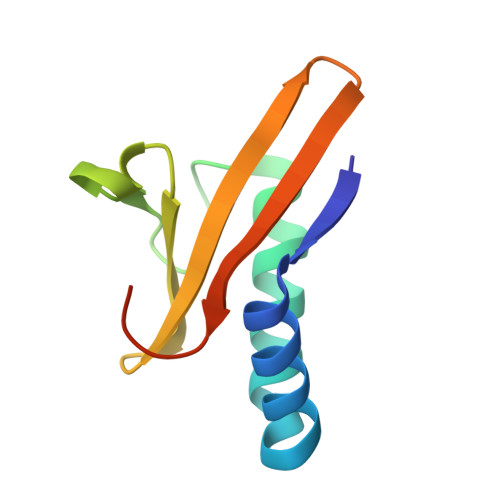Identifying a Molecular Mechanism That Imparts Species-Specific Toxicity to YoeB Toxins.
Ames, J.R., McGillick, J., Murphy, T., Reddem, E., Bourne, C.R.(2020) Front Microbiol 11: 959-959
- PubMed: 32528435
- DOI: https://doi.org/10.3389/fmicb.2020.00959
- Primary Citation of Related Structures:
6N90 - PubMed Abstract:
The ribosome-dependent E. coli (Ec) mRNase toxin YoeB has been demonstrated to protect cells during thermal stress. Agrobacterium tumefaciens (At), a plant pathogen, also encodes a YoeB toxin. Initial studies indicated that AtYoeB does not impact the growth of Ec, but its expression is toxic to the native host At. The current work examines this species-specific effect. We establish the highly similar structure and function of Ec and AtYoeB toxins, including the ability of the AtYoeB toxin to inhibit Ec ribosomes in vitro . Comparison of YoeB sequences and structures highlights a four-residue helix between β-strands 2 and 3 that interacts with mRNA bases within the ribosome. This helix sequence is varied among YoeB toxins, and this variation correlates with bacterial classes of proteobacteria. When the four amino acid sequence of this helix is transplanted from EcYoeB onto AtYoeB, the resulting chimera gains toxicity to Ec cells and lessens toxicity to At cells. The reverse is also true, such that EcYoeB with the AtYoeB helix sequence is less toxic to Ec and gains toxicity to At cultures. We suggest this helix sequence directs mRNA sequence-specific degradation, which varies among proteobacterial classes, and thus controls growth inhibition and YoeB toxicity.
Organizational Affiliation:
Department of Chemistry and Biochemistry, University of Oklahoma, Norman, OK, United States.














